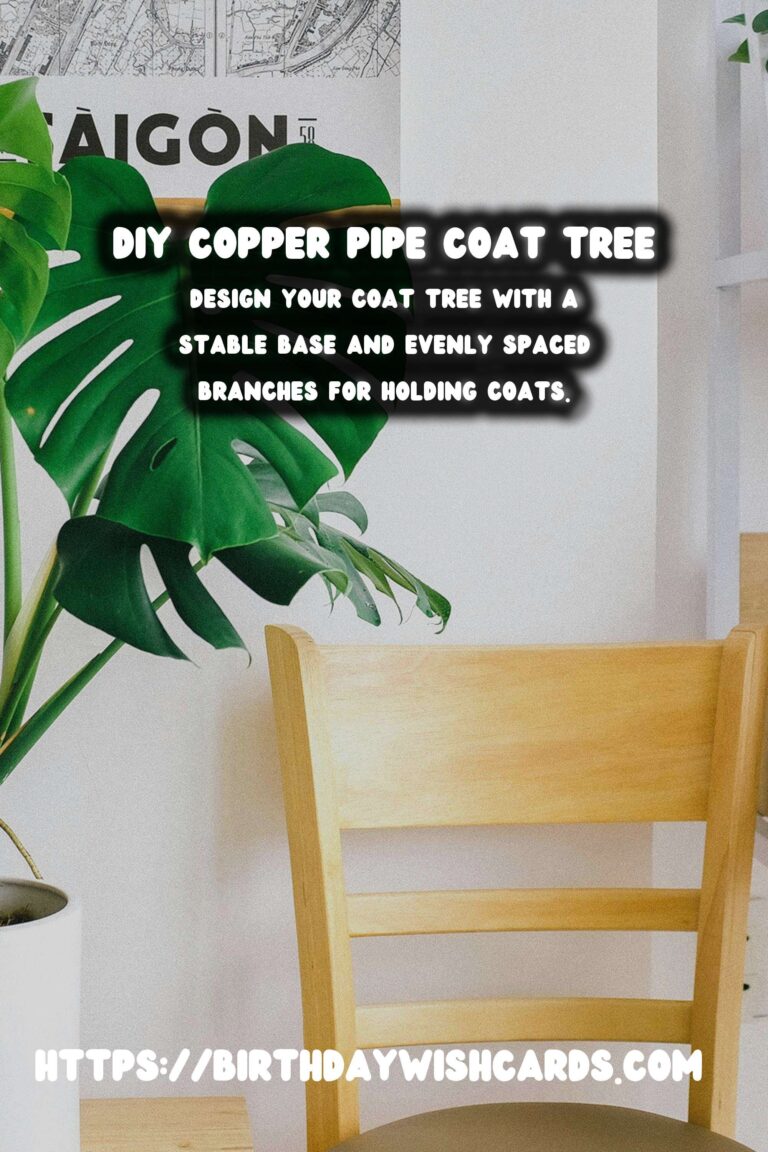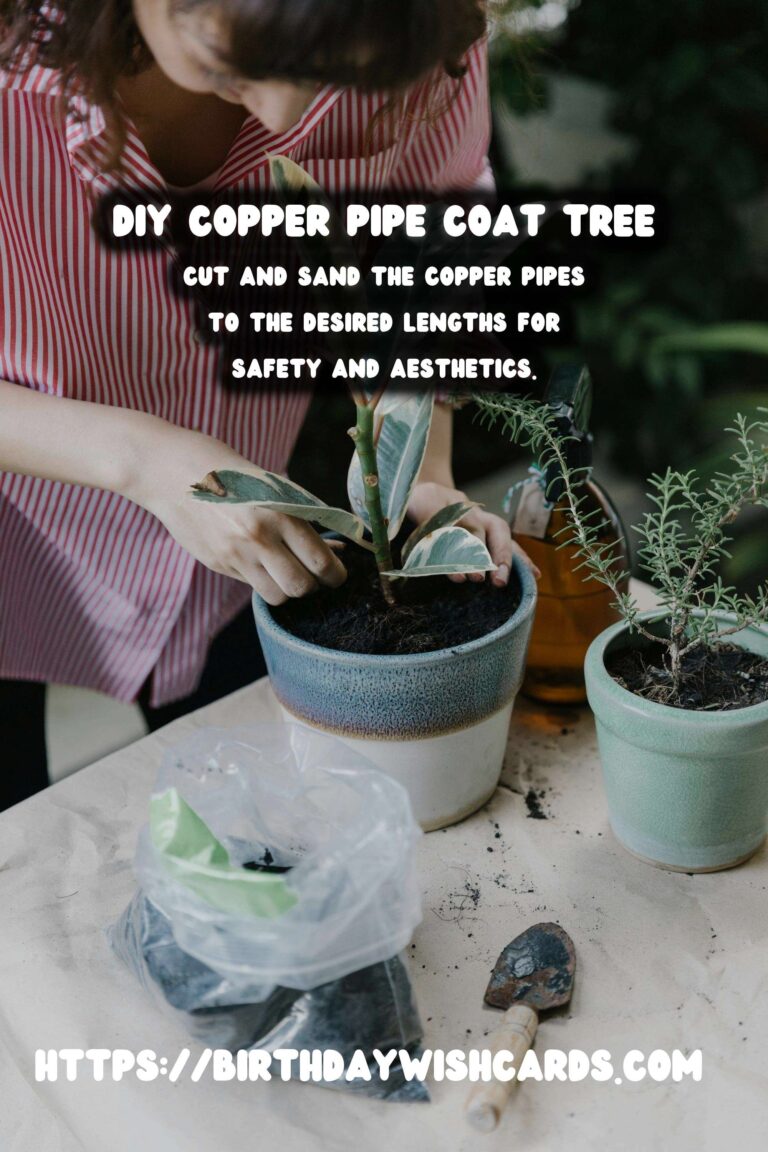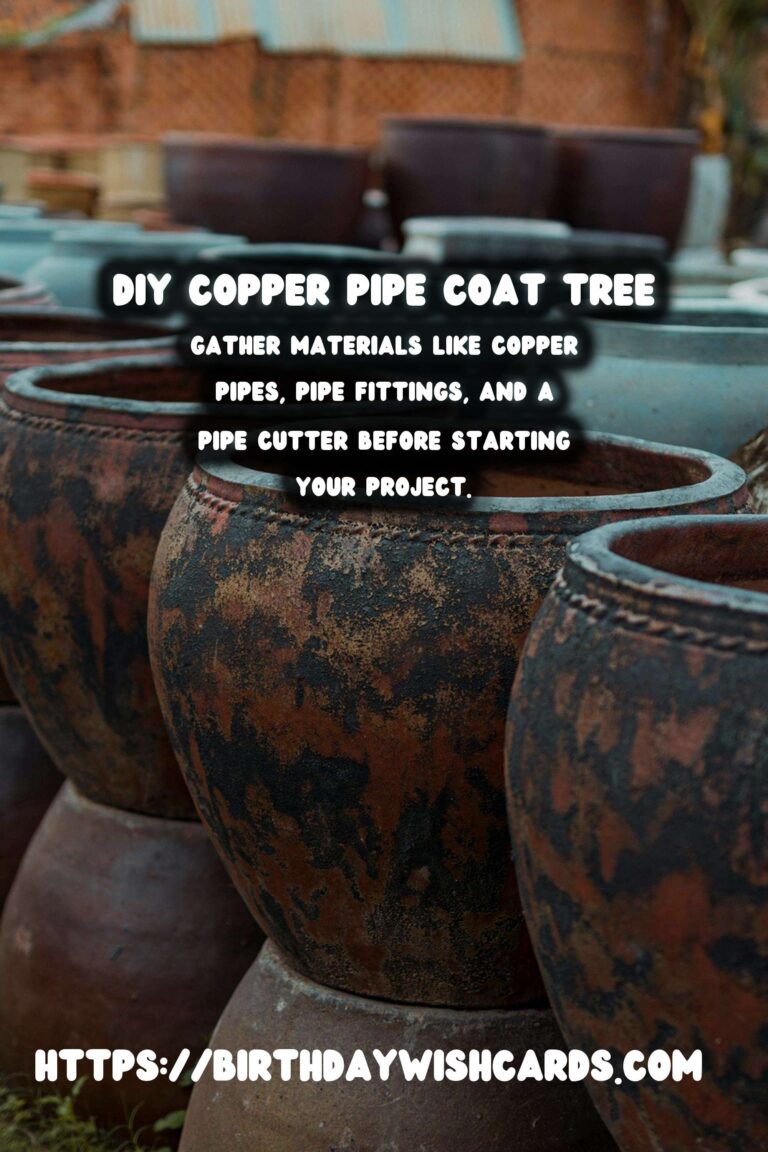
If you’re looking for a stylish and functional piece to add to your home, a DIY copper pipe coat tree might be just what you need. Not only does it serve as a practical storage solution for coats and hats, but it also adds a modern industrial touch to your decor.
Materials Needed
Before you begin, gather the following materials: copper pipes, pipe fittings, a pipe cutter, sandpaper, a measuring tape, and a drill with bits. These are readily available at most hardware stores.
Step 1: Design Your Coat Tree
Start by sketching a design for your coat tree. Decide how tall you want it to be and how many branches you need. Typically, a height of about 6 feet is ideal for a coat tree. Plan for a sturdy base to support the structure.
Step 2: Cut the Copper Pipes
Using a pipe cutter, cut the copper pipes to the desired lengths. Sand the edges of the pipes to remove any sharp burrs. This ensures safety during assembly and use.
Step 3: Assemble the Base
Begin constructing the base of your coat tree. Use pipe fittings to connect the pipes in a stable, tripod-like arrangement. The base should be heavy enough to support the weight of the coats without tipping over.
Step 4: Construct the Trunk and Branches
Attach a longer piece of pipe to the base to form the trunk of the tree. Then, use T-joints and shorter pipe segments to create branches. These branches will hold the coats, so ensure they are evenly spaced and securely attached.
Step 5: Secure the Assembly
Once the branches are in place, double-check all connections to ensure they are tight. Use a drill to secure any loose fittings. This will prevent the coat tree from wobbling or collapsing.
Step 6: Add Finishing Touches
Polish the copper pipes with a cloth to enhance their shine. Over time, copper will develop a patina, adding character to your coat tree. You can apply a sealant if you prefer to maintain the original copper color.
Step 7: Position Your Coat Tree
Place your coat tree in a convenient location. It should be easily accessible but not obstructive. The entryway or a corner of a living room are popular choices.
Maintenance Tips
To keep your copper pipe coat tree in top condition, regularly dust it and occasionally polish the copper. This will maintain its aesthetic appeal and structural integrity.
Conclusion
Creating a DIY copper pipe coat tree is a rewarding project that combines functionality with style. With the right materials and a bit of creativity, you can craft a unique piece that enhances your home’s decor.
A DIY copper pipe coat tree serves as a practical storage solution and adds a modern industrial touch to your decor. Gather materials like copper pipes, pipe fittings, and a pipe cutter before starting your project. Design your coat tree with a stable base and evenly spaced branches for holding coats. Cut and sand the copper pipes to the desired lengths for safety and aesthetics. Assemble the trunk and branches using pipe fittings and secure all connections. Polish the copper pipes to enhance their shine and apply a sealant if desired. Place the coat tree in a convenient location, such as an entryway, for easy access. 









#DIY #HomeDecor #CopperPipe #CoatTree #IndustrialDesign




